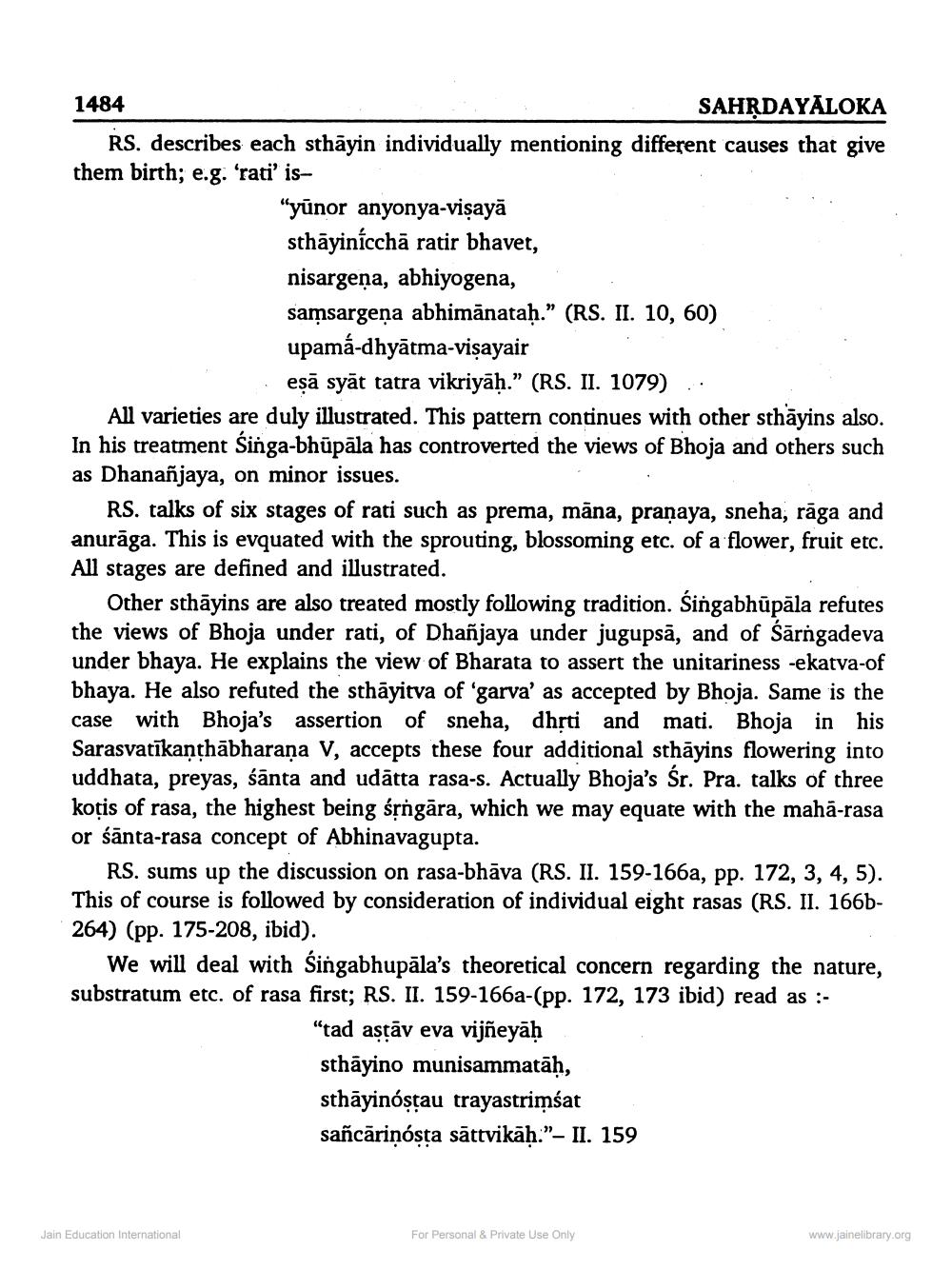________________
1484
SAHRDAYĀLOKA RS. describes each sthāyin individually mentioning different causes that give them birth; e.g. 'rati' is
“yūnor anyonya-visayā sthāyinícchā ratir bhavet, nisargeņa, abhiyogena, samsargeņa abhimānataḥ.” (RS. II. 10, 60)
upamá-dhyātma-visayair
· eşā syāt tatra vikriyāḥ.” (RS. II. 1079) :: All varieties are duly illustrated. This pattern continues with other sthāyins also. In his treatment Singa-bhūpāla has controverted the views of Bhoja and others such as Dhananjaya, on minor issues.
RS. talks of six stages of rati such as prema, māna, pranaya, sneha, rāga and anurāga. This is evquated with the sprouting, blossoming etc. of a flower, fruit etc. All stages are defined and illustrated.
Other sthāyins are also treated mostly following tradition. Śingabhūpāla refutes the views of Bhoja under rati, of Dhañjaya under jugupsā, and of Sārngadeva under bhaya. He explains the view of Bharata to assert the unitariness -ekatva-of bhaya. He also refuted the sthāyitva of 'garva' as accepted by Bhoja. Same is the case with Bhoja's assertion of sneha, dhịti and mati. Bhoja in his Sarasvatīkanthābharana V, accepts these four additional sthāyins flowering into uddhata, preyas, śānta and udātta rasa-s. Actually Bhoja's Śr. Pra. talks of three kotis of rasa, the highest being śrngāra, which we may equate with the mahā-rasa or śānta-rasa concept of Abhinavagupta.
RS. sums up the discussion on rasa-bhāva (RS. II. 159-166a, pp. 172, 3, 4, 5). This of course is followed by consideration of individual eight rasas (RS. II. 166b264) (pp. 175-208, ibid).
We will deal with Singabhupāla's theoretical concern regarding the nature, substratum etc. of rasa first; RS. II. 159-166a-(pp. 172, 173 ibid) read as :
"tad astāv eva vijñeyāḥ sthāyino munisammatāḥ, sthāyinoștau trayastrimśat sañcāriņosta sāttvikāḥ.”– II. 159
Jain Education International
For Personal & Private Use Only
www.jainelibrary.org




